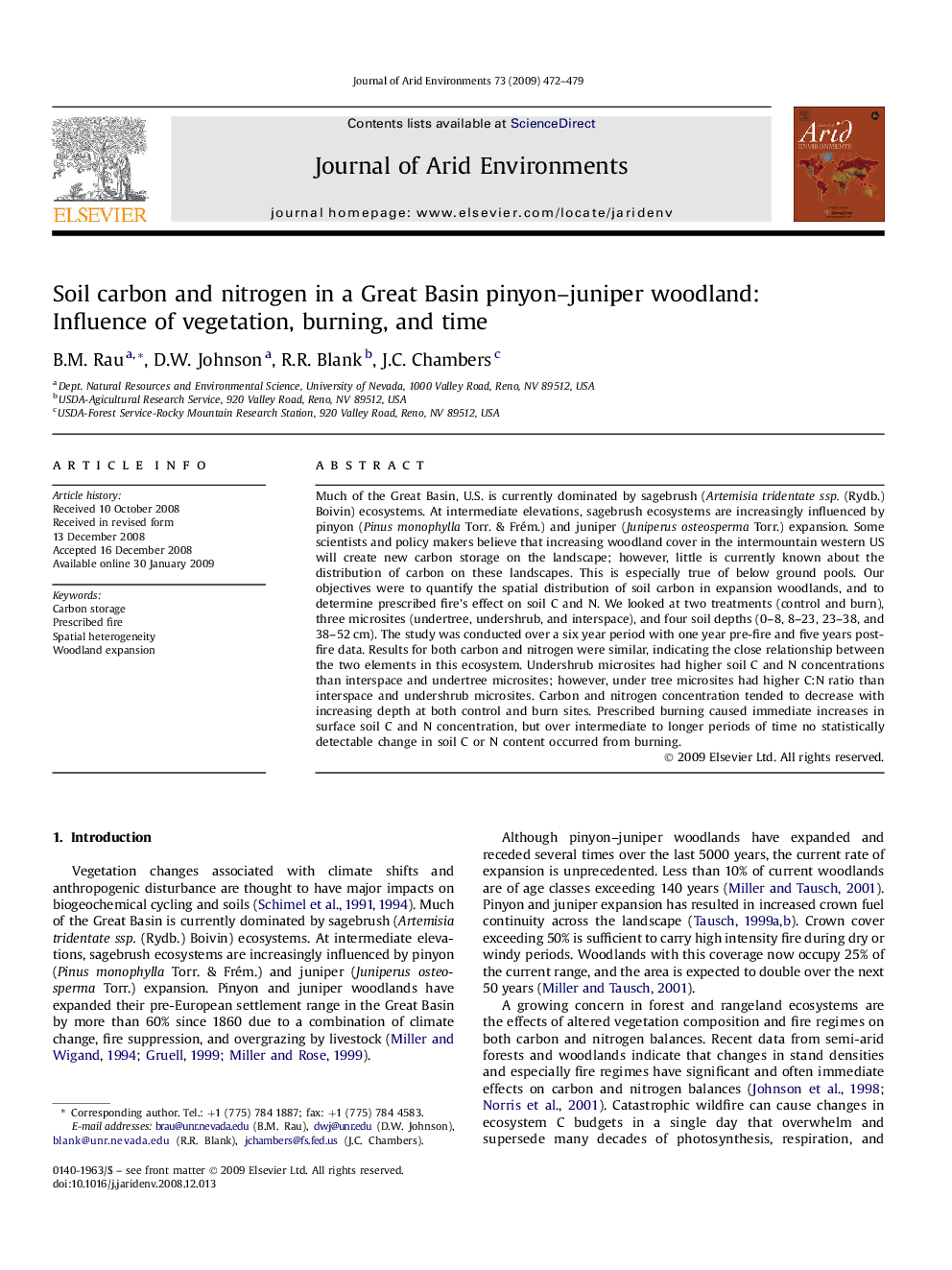| Article ID | Journal | Published Year | Pages | File Type |
|---|---|---|---|---|
| 4393953 | Journal of Arid Environments | 2009 | 8 Pages |
Much of the Great Basin, U.S. is currently dominated by sagebrush (Artemisia tridentate ssp. (Rydb.) Boivin) ecosystems. At intermediate elevations, sagebrush ecosystems are increasingly influenced by pinyon (Pinus monophylla Torr. & Frém.) and juniper (Juniperus osteosperma Torr.) expansion. Some scientists and policy makers believe that increasing woodland cover in the intermountain western US will create new carbon storage on the landscape; however, little is currently known about the distribution of carbon on these landscapes. This is especially true of below ground pools. Our objectives were to quantify the spatial distribution of soil carbon in expansion woodlands, and to determine prescribed fire's effect on soil C and N. We looked at two treatments (control and burn), three microsites (undertree, undershrub, and interspace), and four soil depths (0–8, 8–23, 23–38, and 38–52 cm). The study was conducted over a six year period with one year pre-fire and five years post-fire data. Results for both carbon and nitrogen were similar, indicating the close relationship between the two elements in this ecosystem. Undershrub microsites had higher soil C and N concentrations than interspace and undertree microsites; however, under tree microsites had higher C:N ratio than interspace and undershrub microsites. Carbon and nitrogen concentration tended to decrease with increasing depth at both control and burn sites. Prescribed burning caused immediate increases in surface soil C and N concentration, but over intermediate to longer periods of time no statistically detectable change in soil C or N content occurred from burning.
